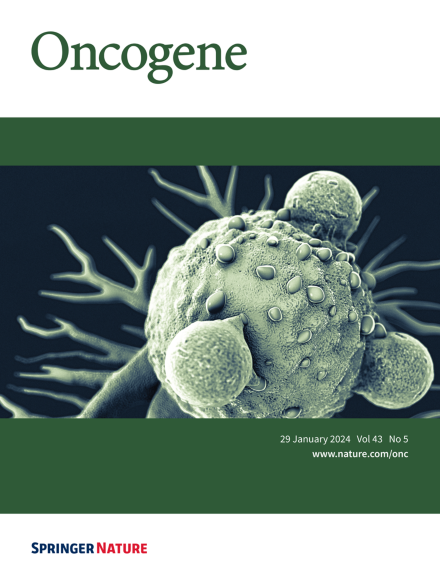Primary cilia and cancer: a tale of many faces
IF 7.3
1区 医学
Q1 BIOCHEMISTRY & MOLECULAR BIOLOGY
引用次数: 0
Abstract
Cilia are microtubule-based sensory organelles which project from the cell surface, enabling detection of mechanical and chemical stimuli from the extracellular environment. It has been shown that cilia are lost in some cancers, while others depend on cilia or ciliary signaling. Several oncogenic molecules, including tyrosine kinases, G-protein coupled receptors, cytosolic kinases, and their downstream effectors localize to cilia. The Hedgehog pathway, one of the most studied ciliary-signaling pathways, is regulated at the cilium via an interplay between Smoothened (an oncogene) and Patched (a tumor suppressor), resulting in the activation of pro-survival programs. Interestingly, cilia loss can result in resistance to Smoothened-targeting drugs and increased cancer cell survival. On the other hand, kinase inhibitor-resistant and chemoresistant cancers have increased cilia and increased Hedgehog pathway activation, and suppressing cilia can overcome this resistance. How cilia regulate cancer is therefore context dependent. Defining the signaling output of cilia-localized oncogenic pathways could identify specific targets for cancer therapy, including the cilium itself. Increasing evidence implicates cilia in supporting several hallmarks of cancer, including migration, invasion, and metabolic rewiring. While cell cycle cues regulate the biogenesis of cilia, the absence of cilia has not been conclusively shown to affect the cell cycle. Thus, a complex interplay between molecular signals, phosphorylation events and spatial regulation renders this fascinating organelle an important new player in cancer through roles that we are only starting to uncover. In this review, we discuss recent advances in our understanding of cilia as signaling platforms in cancer and the influence this plays in tumor development.

原发性纤毛和癌症:一个多面故事。
纤毛是基于微管的感觉细胞器,从细胞表面伸出,能够检测来自细胞外环境的机械和化学刺激。研究表明,纤毛在某些癌症中消失,而其他癌症则依赖于纤毛或纤毛信号。一些致癌分子,包括酪氨酸激酶、g蛋白偶联受体、胞质激酶及其下游效应物定位于纤毛。Hedgehog通路是研究最多的纤毛信号通路之一,它通过Smoothened(一种致癌基因)和patch(一种肿瘤抑制因子)之间的相互作用在纤毛上受到调节,导致促生存程序的激活。有趣的是,纤毛丢失可导致对平滑靶向药物的耐药性和癌细胞存活率的增加。另一方面,激酶抑制剂耐药和化疗耐药的癌症纤毛增加,Hedgehog通路激活增加,抑制纤毛可以克服这种耐药性。因此纤毛如何调节癌症取决于环境。确定纤毛定位致癌途径的信号输出可以确定癌症治疗的特定靶点,包括纤毛本身。越来越多的证据表明纤毛支持癌症的几个特征,包括迁移、侵袭和代谢重新布线。虽然细胞周期线索调节纤毛的生物发生,但没有确凿的证据表明纤毛的缺失会影响细胞周期。因此,分子信号,磷酸化事件和空间调节之间的复杂相互作用使得这种迷人的细胞器成为癌症中重要的新角色,我们才刚刚开始发现。在这篇综述中,我们讨论了我们对纤毛作为癌症信号平台及其在肿瘤发展中的影响的理解的最新进展。
本文章由计算机程序翻译,如有差异,请以英文原文为准。
求助全文
约1分钟内获得全文
求助全文
来源期刊

Oncogene
医学-生化与分子生物学
CiteScore
15.30
自引率
1.20%
发文量
404
审稿时长
1 months
期刊介绍:
Oncogene is dedicated to advancing our understanding of cancer processes through the publication of exceptional research. The journal seeks to disseminate work that challenges conventional theories and contributes to establishing new paradigms in the etio-pathogenesis, diagnosis, treatment, or prevention of cancers. Emphasis is placed on research shedding light on processes driving metastatic spread and providing crucial insights into cancer biology beyond existing knowledge.
Areas covered include the cellular and molecular biology of cancer, resistance to cancer therapies, and the development of improved approaches to enhance survival. Oncogene spans the spectrum of cancer biology, from fundamental and theoretical work to translational, applied, and clinical research, including early and late Phase clinical trials, particularly those with biologic and translational endpoints.
 求助内容:
求助内容: 应助结果提醒方式:
应助结果提醒方式:


